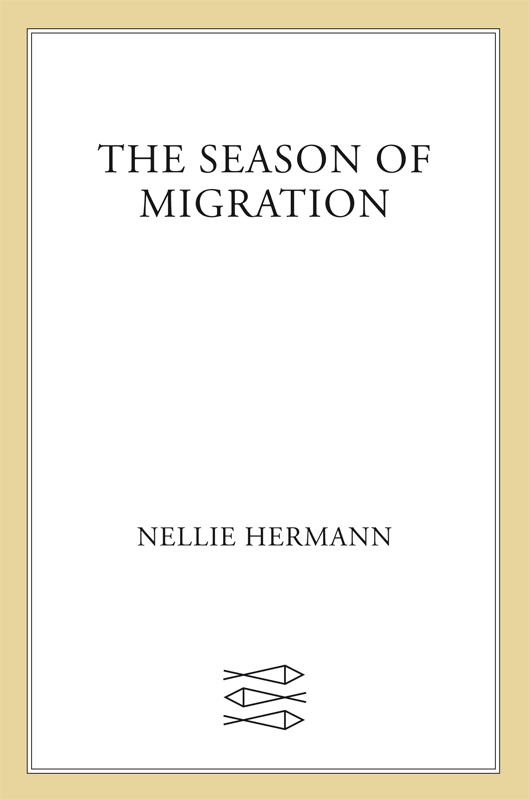
The Season of Migration
A Novel
کتاب های مرتبط
- اطلاعات
- نقد و بررسی
- دیدگاه کاربران
نقد و بررسی

October 13, 2014
The fledgling talent of a future artistic giant is the subject of this second novel by Hermann (The Cure for Grief). Young Vincent Van Gogh ventures out on a journey into the mining region of Belgium, observing the impoverished, often wretched lives of those who work underground. Written half as a third-person narrative, half as Vincent’s letters to his brother, Theo, the book gradually illuminates Vincent’s artistic development through his experiences of family, love, spirituality, and occasional, sublime glimpses of beauty amid the gloom and dust of his environment. Vivid imagery skillfully evokes Van Gogh’s paintings, an effect marred only by moments of heavy-handedness in the concluding scenes. Subtle and winding, but deeply felt, the novel succeeds as an origin story of a particular creative genius.

November 1, 2014
Hermann follows up her well-received debut (The Cure for Grief, 2008) with a sensitive novel about a crucial turning point in the life of Vincent van Gogh.Shortly after being dismissed from his post as a lay preacher in a Belgian mining town, van Gogh stopped writing to his younger brother, Theo, for 10 months, the only gap in their voluminous correspondence. As Hermann imagines it, the passionate, awkward, unfocused van Gogh knows he's once again disappointed his parents, and a visit from Theo-comfortably ensconced at Goupil's, the art dealership where Vincent once worked-makes it clear that his brother too is worried about him. "[D]on't you want improvement in your life?" Theo asks. "[Y]ou've changed so much that you're just not the same any longer." This loss of faith by the person closest to him unnerves van Gogh, already shaken by his encounter with the grim realities of mining life and his inability to provide the soothing religious reassurances his father doles out as a minister. Hermann combines an account of Vincent's long walk toward Paris to see Theo in May 1880 with letters describing his transformative stay in Belgium, which he plans to deliver by hand so his brother can understand what has happened to him. Hermann quietly shows van Gogh drawing compulsively as he trudges miserably through the countryside, poor, sick and starving but always looking with wonder at the world around him. Nightmarish memories of the oppressed miners whose plight he couldn't ameliorate slowly open up into the realization that "This is life; this is my life. I am witness." We know, although Vincent does not, that he is on the road to achieving the apotheosis he spoke of in happier times with Theo: "the way an artist could succeed at portraying a feeling in an image...translate not just the beauty of it but the exact joy that we felt." Finely wrought fiction eschewing the usual cliches about artistic inspiration in favor of deeper, more organic understanding.
COPYRIGHT(2014) Kirkus Reviews, ALL RIGHTS RESERVED.

January 1, 2015
Though painter Vincent van Gogh maintained a prodigious correspondence with his beloved brother, Theo, throughout his life, art historians have long puzzled over a mysterious 10-month gap in this exchange. In her masterful work of historical fiction, Hermann (The Cure for Grief, 2008) uses Van Gogh's actual letters of August 1879 and June 1880 as bookends and imagines the letters he might have written in between. Employing the sensitive and searching voice of the artist in his midtwenties, Hermann extends the origin story of Van Gogh's career, recounting his time spent as a preacher and schoolmaster in the impoverished mining town of Borinage, Belgium. Inspired by Van Gogh's lyrical and impressionistic writing style, Hermann envisions the artist's spiritual questioning during this period and the deepening empathy brought about by his romances and relationships with the townspeople. Between bouts of melancholy and lust for life euphoria, Van Gogh responds to the bleakness of his setting by embracing art and beauty as his calling. Everything belongs to the world of pictures, he realizes, everything we see. (Reprinted with permission of Booklist, copyright 2015, American Library Association.)

























دیدگاه کاربران